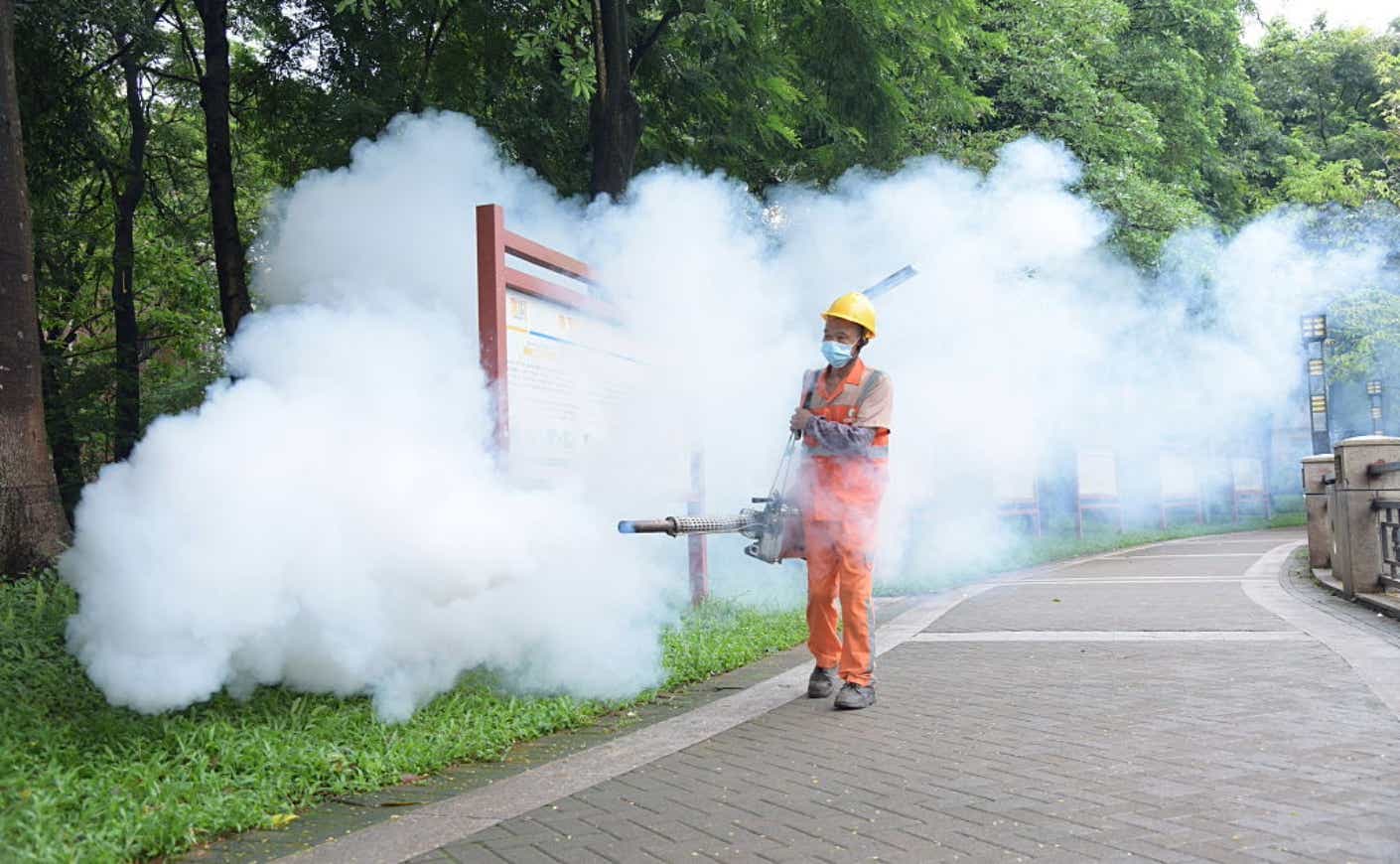The end of summer is in sight, yet mosquito season continues — and in other countries, these insects are carrying far more than an itch.
The Centers for Disease Control and Prevention (CDC) has issued alerts about chikungunya, a virus that’s been quietly circulating for decades but is now fueling record outbreaks in parts of the world, including in China.
While the disease hasn’t taken hold in the U.S. — and cases here remain uncommon and largely traced to infections abroad — rising temperatures, extended mosquito seasons, and greater global movement are widening the insects’ range and increasing the risk it could surface in new areas.
Here’s a closer look at where chikungunya is spreading, how to spot the it, and how to avoid infection.
What is the chikungunya virus?
Chikungunya (pronounced chick-en-GOON-ya) is a viral disease thought to have originated in mosquitoes and wild primates before spilling over to humans. Its name comes from the Kimakonde language of Tanzania, where it was first identified in 1952, and translates to “that which bends up” — a nod to the hunched posture caused by the virus’s severe joint pain.
The disease spreads through Aedes mosquitoes (mainly Aedes aegypti and Aedes albopictus). A mosquito becomes infectious after biting someone who has the virus, then passes it on with its next bites.
Since its discovery, chikungunya has appeared in more than 110 countries, from Nigeria to India to Indonesia.
What are the signs and symptoms of chikungunya?
The hallmark symptom of this virus is intense joint pain — the kind that can make it difficult if not impossible to get out of bed.
Other common symptoms include muscle aches, rash, fatigue, high fever, and swollen joints. And they don’t take long to show up: Symptoms typically appear within 3 to 7 days after being bitten by an infected mosquito.
Chikungunya is rarely fatal, and most people are back on their feet within a few weeks. But for about 40 percent of patients, the joint and muscle pain can stick around — sometimes for months, even years, according to the Mayo Clinic.
How widespread are infections?
This year, more than 240,000 chikungunya cases have been reported across Central and South America, Africa, the Indian Ocean region, and Asia. In China’s southern Guangdong province, officials have confirmed over 8,000 cases — the largest outbreak the country has ever seen.
In response, authorities have rolled out measures reminiscent of the Covid-19 era. According to NPR, soldiers are fogging streets and parks, while community workers go door-to-door dumping out stagnant water, clearing clogged drains, and covering containers where mosquitoes breed. People who test positive are reportedly being sent to hospitals to isolate.
Even so, China’s outbreak is still small compared to that of other countries. La Réunion, an island in the Indian Ocean, has logged nearly 50,000 cases this year alone.
Most outbreaks happen in tropical and subtropical regions where mosquitoes thrive year-round. But experts, including virologist Laurie Silva, warn that climate change and increased global travel could help the virus spread to new places.
In the U.S., for example, chikungunya does occasionally turn up in travelers coming back from affected countries. So far this year, there have been 46 reported cases, though fortunately there hasn’t been a locally acquired infection since 2019, according to the Centers for Disease Control and Prevention.
Where has the CDC issued travel alerts for chikungunya?
If you’re planning some last-minute summer travel, it’s worth checking where outbreaks are happening before you book that ticket.
As of Aug. 1, the Centers for Disease Control issued a Level 2 “Practice Enhanced Precautions” alert for these countries and regions dealing with chikungunya outbreaks:
- Bolivia
- Guangdong Province, China
- Kenya
- Madagascar
- Mauritius
- Mayotte
- Réunion
- Somalia
- Sri Lanka
The agency has also warned of an elevated risk for travelers heading to Brazil, Colombia, India, Mexico, Nigeria, Pakistan, the Philippines, and Thailand.
Is there a chikungunya vaccine?
Yes, and you might be surprised to learn that it’s a fairly recent development. In 2023, the FDA approved Ixchiq, the first vaccine against chikungunya, for adults 18 and older.
This past May, however, both the FDA and CDC recommended pausing its use in people 60 and over after reports of rare but serious side effects — including neurological and heart complications, and two deaths. After a safety review, the pause was lifted, but the FDA added warnings about higher risks in older adults, especially those over 65 with chronic health conditions.
Regulators in Europe took similar precautions, temporarily suspending Ixchiq for seniors after two deaths in people aged 62 to 89. They’ve since allowed its use again, concluding the shot still offers strong protection.
In February, the FDA approved Vimkunya, a single-dose, non-live vaccine for anyone 12 and older. Unlike Ixchiq, it’s made from virus-like particles and can’t cause infection — a factor that might make it more appealing for older adults or people with certain health conditions.
Given how widespread chikungunya has become in parts of the world, vaccination can be an important way to protect yourself if you’re traveling to an area with an outbreak. But as with any vaccine, it’s best to talk with your doctor about which option is right for you, especially if you’re older or have underlying health conditions.









